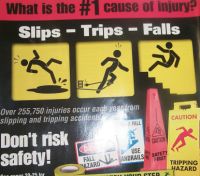By Klaus Allion, Managing Director at ANT Telecom
Whilst the number of any deaths in the workplace is too many, when this figure is compared to data from 20 years ago, the number of fatalities within British industries has almost halved thanks to increased regulations and health and safety concerns moving higher up the board room agenda.
However, in more recent years this level has remained broadly level, with the average number of workers killed at work over the past 5 years averaging at 141. This clearly demonstrates that even though health and safety at work has become more of a priority, more must be done in order to reduce the level of fatalities even further.
When you break these statistics down by industry; construction, agriculture and manufacturing experience the highest numbers of workplace deaths in the UK, but fatalities can occur in any sector as no industry is immune to risk. For example, those working in ATEX environments are exposed to potentially explosive atmospheres and lone workers, such as teachers, security and medical staff, who regularly perform their role without supervision from colleagues, are all exposed to varying degrees of risk.
Lone workers, in particular, face increased levels of risk compared to those working within teams of multiple employees. This is only exacerbated further if employees are not appropriately supported through specific health and safety processes and devices - ensuring that in the event of an incident on site, they can quickly and easily call for help.
Establishing a proactive safety culture
No matter the industry or size of the organisation, safety must be a paramount consideration for all businesses. In the UK, there are a number of regulations in place to ensure that employers implement strict procedures to assure the wellbeing of staff and visitors on site. But instead of seeing this as a tick-box exercise to follow in order to be legally compliant, businesses should adopt safety regulations as part of their workplace culture and promote this to the workforce to ensure they fully understand the risks if they do not comply. Integrating safety procedures as a part of an employee's day to day tasks will help to position them as less of a chore and more of an essential task within their role.
By establishing a proactive safety culture, health and safety managers can also foster a positive practice of continually looking to identify new ways in which to improve safety processes further, through incremental process improvements or technology overhauls. Regular safety audits are a good way to evaluate procedures throughout the organisation and also review any issues or changes since the most recent audit, such as hiring new staff or introducing new machinery. This way, employers can regularly review safety practices and keep on top of any potential risks that could endanger the workforce.
The role of technology
In addition to encouraging a proactive safety culture throughout an organisation, technology solutions are also key to safeguarding staff.
Depending on the environment and the job functions of employees, there may be several safety systems that should be implemented such as alarms to alert in case of fire or intruders trying to illegally access the building.
Personal safety devices are also essential, particularly for those organisations that employ lone workers. Without regular contact from colleagues, lone workers cannot rely on other members of staff to raise the alarm in the event of an incident. Therefore, lone worker safety devices are an essential tool to ensure that isolated members of the workforce are supported. These can come in a number of different forms, including integrated panic buttons that open up communication channels with managers, and tilt sensors that can detect when the user is in a horizontal position and automatically raise the alarm to nominated individuals to quickly respond and resolve the situation.
Complacency could be deadly
The UK has one of the lowest rates of fatal injury rates in Europe but that fact should not be an excuse for organisations to become complacent when it comes to health and safety. As businesses grow and evolve, so too can health and safety hazards that could lead to disaster for those that are not embracing a proactive safety culture. Therefore, with a continued focus on improvements to safety, especially within industries such as manufacturing and agriculture that typically employ high numbers of lone workers, the number of injuries and fatalities across UK industries can be reduced even further.






